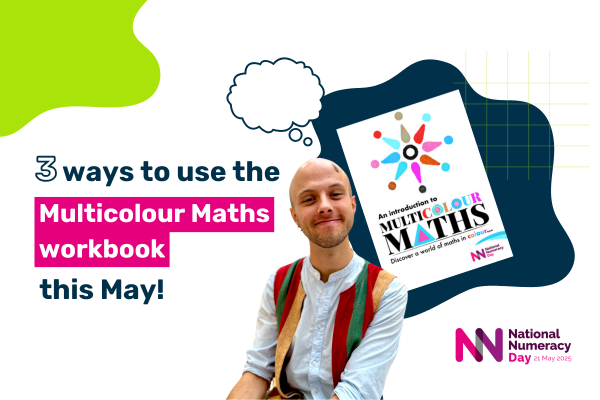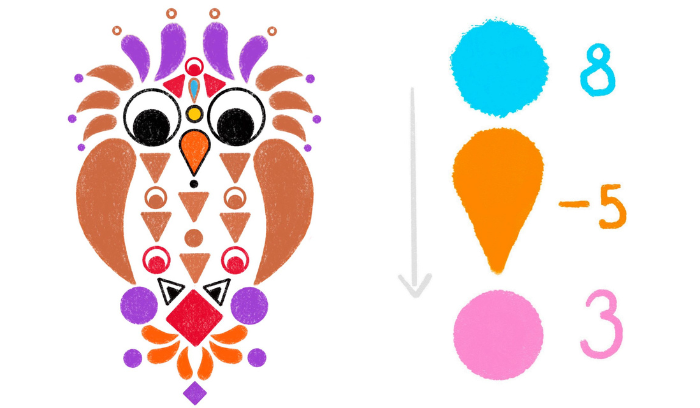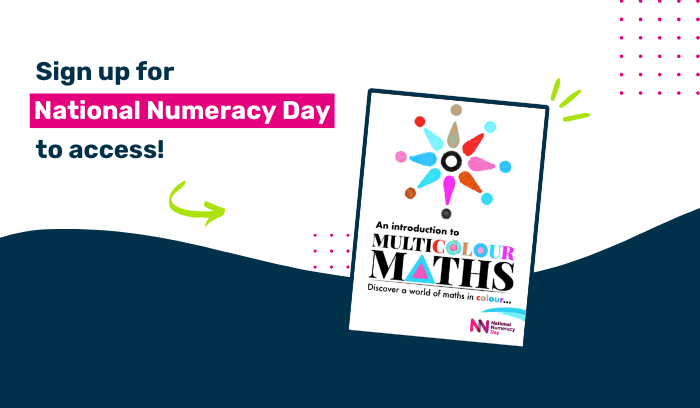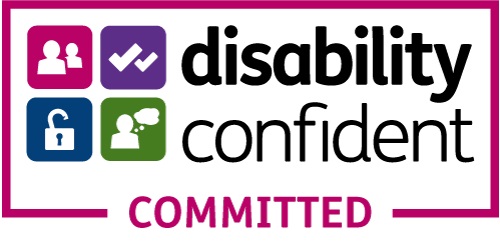Have you spotted the Multicolour Maths workbook in this year's toolkit for schools? Here are three ways that this method can be used to improve attitudes towards numbers, maths and money this National Numeracy Day:
Blog
3 ways to use the Multicolour Maths workbook this National Numeracy Day
7 May 2025
By Sam Tomlin
From multiplication and squaring to simple addition & subtraction, Brook Tate's colourful new method aims to make maths more engaging and accessible for everyone.
Let's explore Multicolour Maths this National Numeracy Day!

1) Colour can make a big difference when using maths to manage our money
The modern world revolves around technology, with almost all banking carried out on our devices. By removing the physical experience, we have increased the amount of numbers that we have to sift through - from bank statements to withdrawals, they are everywhere!
This can be stressful for anyone who isn't confident in their maths ability and incredibly overwhelming for those with dyscalculia or maths anxiety. You may not notice the sheer amount of numbers that litter our lives, but they can wreak havoc if you lack confidence. Bus timetables, shop prices, and subscriptions, to name just a few.
Multicolour Maths can support you through these everyday challenges, building your confidence in all things numerical by injecting colour and shape into everyday maths! The freeform ability to colour, draw and calculate opens maths up in interesting ways, and could help to take some of the stress away. Maths and numbers become something that can be played with and used creatively, instead of being a means to an end. This could build confidence in your mathematical ability and increase your enjoyment of it tenfold.
2) Spark a conversation exploring all the ways art and maths connect
Our world is full of creative people who can often see patterns and information much more easily when colour is involved. Research suggests that 15% of the UK are neurodivergent and would benefit from creative and interesting methods for approachingeveryday tasks. As someone with ADHD, I definitely find visual methods for learning far more useful than standard approaches, as they engage my curiosity and encourage me to explore other avenues.
Speaking of which, exploring your times tables with Multicolour Maths can create a fascinating coloured diamond. The options for design are endless - the only restriction is the order of certain colours! I have seen vibrant owls, beautifully detailed mosaics, tales told about river boats and elegant giraffes. These patterns mirror the incredible designs in Islamic mosaics and the intricacies of the Mandelbrot set.

A small jump from Multicolour Maths lands you in the culturally diverse and thrilling world of artists like Kandinsky or M.C. Escher. These artists were influenced heavily by mathematical designs and ideas, and they both present great opportunities for a natter about numbers. Can you make money as an artist? How can maths influence art? Or on the other hand, has art ever influenced maths? This could lead down a rabbit hole into Fractals, Sierpinski, Koch and Mandelbrot himself! Fractal geometry forms an often overlooked area of mathematics which would appeal to a large proportion of people up and down the country, due to their incongruous and visually striking nature.
We learn the most by broadening our horizons, stretching the limits of what we know and talking with peers. This method can provide just that!
3) Use your pattern recognition skills in the real world
We all know that it’s highly unlikely to have an item priced at £2.17, but you probably wouldn’t be able to say for certain whether a square number can end in 8.
As the Multicolour Maths method obeys the standard rules of multiplication and addition, there are certain colour and shape combinations that will never exist. You can’t paint a light blue square, nor can you paint a pink one, as a square number will never end in an 8 or a 3. Spotting this when working solely with numbers is hard to do, but it’s significantly easier when painting and playing with the colours assigned to each number!
Although the mathematical justification for the above result stretches into university-level maths, it is perfect for a gentle introduction to deeper mathematical thinking, particularly if you are already curious. This is one of many patterns a colour-based system allows you to explore and investigate more easily. As before, a discussion of why is the most beneficial part and this questioning can lead to in-depth conversations. For example, you could research Greg Rowland and the Semiotic Alliance, delving deeper into the psychology behind certain numbers. Many businesses go to consultants like Greg to select the right number for their product, and many hours are spent testing different number combinations, depending on whether they want products to be considered trustworthy, exciting or even luxurious. How would KFC taste with only 8 secret herbs and spices? Would WD-39 be quite as trustworthy? Would 6-UP be a popular lemonade?
There are countless examples of prices being chosen for their psychological value throughout society. The newest smartphone could be £899, but never £900. A top-of-the-range car will be priced at £19,499, not £20,000. The perceived difference between these values is much greater than the actual difference, and businesses consistently use our natural numerical weaknesses to their advantage.
Numbers are ever present and have a considerable impact on our lives, so we should spend time familiarising ourselves with how they interact. The Multicolour Maths method can help you - increasing confidence and sparking curiosity in our mathematical world!
Sign up to access the free workbook
In celebration of National Numeracy Day: the money edition, Multicolour Maths founder Brook Tate has created a special workbook.
Find the workbook and many more free resources in our toolkit for children. To access, please sign up using the button below.





